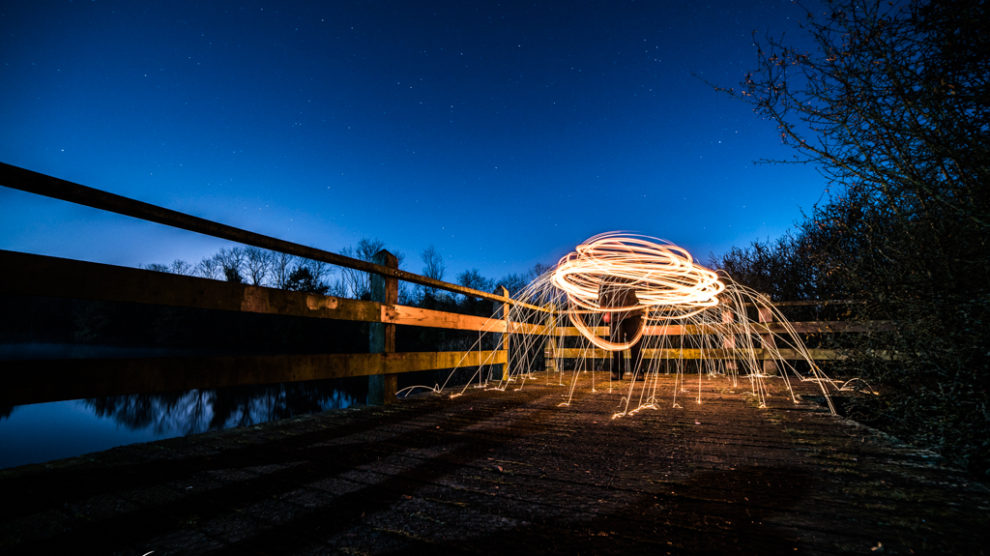First Published November 7th, 2017
I love a lot of types of photography, and am building my portfolio in a number of different ways.
I’m not the most experienced Photographer out there, but, how do you learn? by doing things over and over again, until you are comfortable with the process.
Lightpainting is quite new to me in a sense of doing patterns and getting more creative than just throwing some flash at a building, or just lighting up with a torch on Long Exposure.
There are so many more creative ideas and fun things to do with lights and different forms of lighting….some more dangerous than others.
I should probably say right now, don’t try this at home. find someone who is capable and experienced, and learn that way. I am in no way endorsing anything that you attempt. This post is for entertainment only.
Now the disclaimer parts are out the way, lets get on with the fun stuff.
Kit you need to do this.
A DSLR, or Mirrorless Camera. Something you can use in a manual mode.
A tripod to keep everything steady.
If possible an Intervelometer or Trigger.
Torches, and lightpainting tools.
Wire wool, a whisk and a dog lead is what was used for the wire wool spinning. And a Lighter.
I sometimes go out with a local group based in Coalville called Photography Digest(ive). Fantastic group of people and we all want to learn new things and techniques.
I’d done one lightpainting tutorial and workshop type thing before this, which was hugely informative and fun to do. I will give a shout out to that at some point.
Below is a test shot to see if my homemade lightwand did the trick. It did and i’m quite happy with the results.
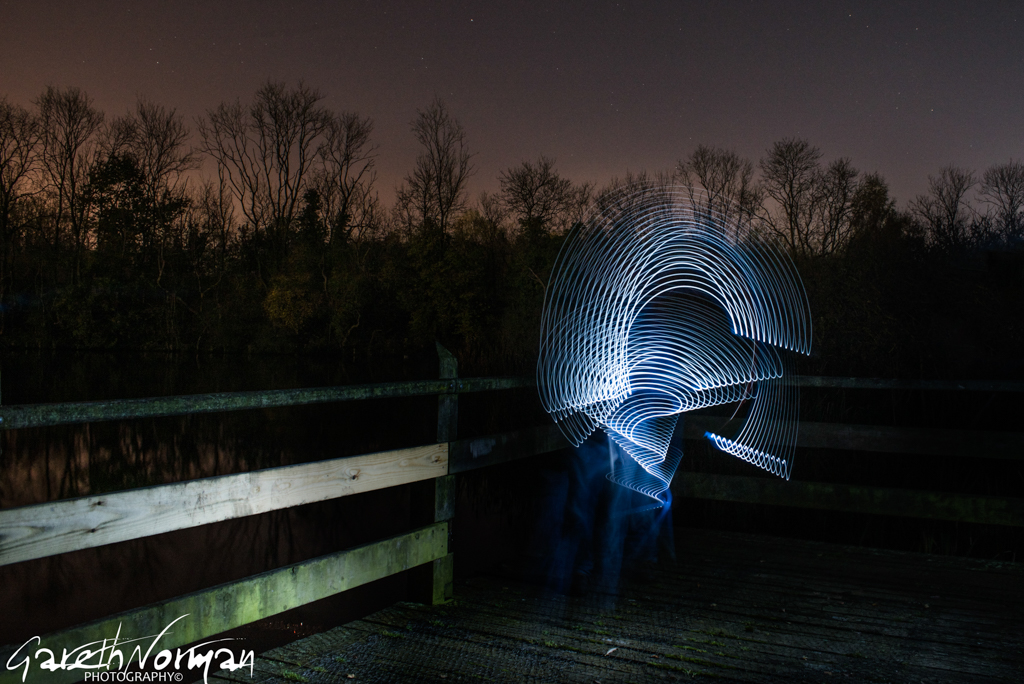
Starting slowly to get the camera settings sorted out. Still looks so cool.
Now fire getting involved. This is Peter Swinging around this baton. He has a load of experience and done this for years. there is a limit to the amount of shapes you can do with fire. Either way, i kept it pretty simple for the first go.
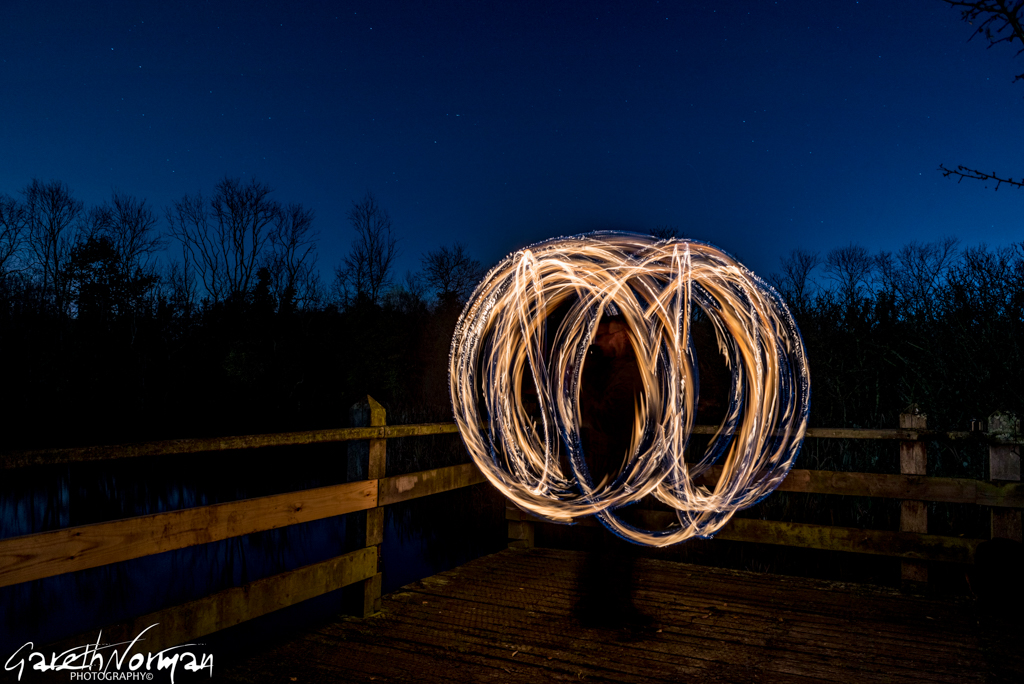 EXIF:f9, ISO200, 12 Seconds
EXIF:f9, ISO200, 12 Seconds
there is a huge element of timing to get a shot like this, and a great amount of dexterity and skill to swing in such a perfect pattern.
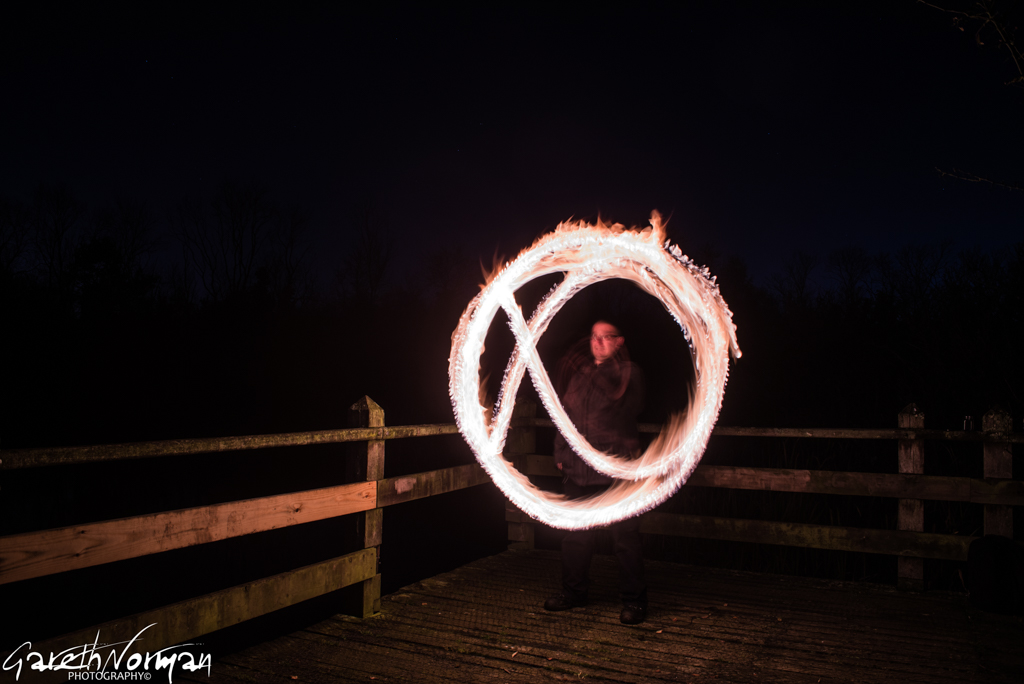 EXIF:f9, ISO200, 6 Seconds
EXIF:f9, ISO200, 6 Seconds
I decided to move onto using an LED wand for the next part. This was an attempt to emulate something i was shown a week before, but didn’t work out too well.
Trying to make a patterned globe. More practice is required. thinking in these dimensions is interesting. Need to go out further in the middle and fill in some of the gaps as well.
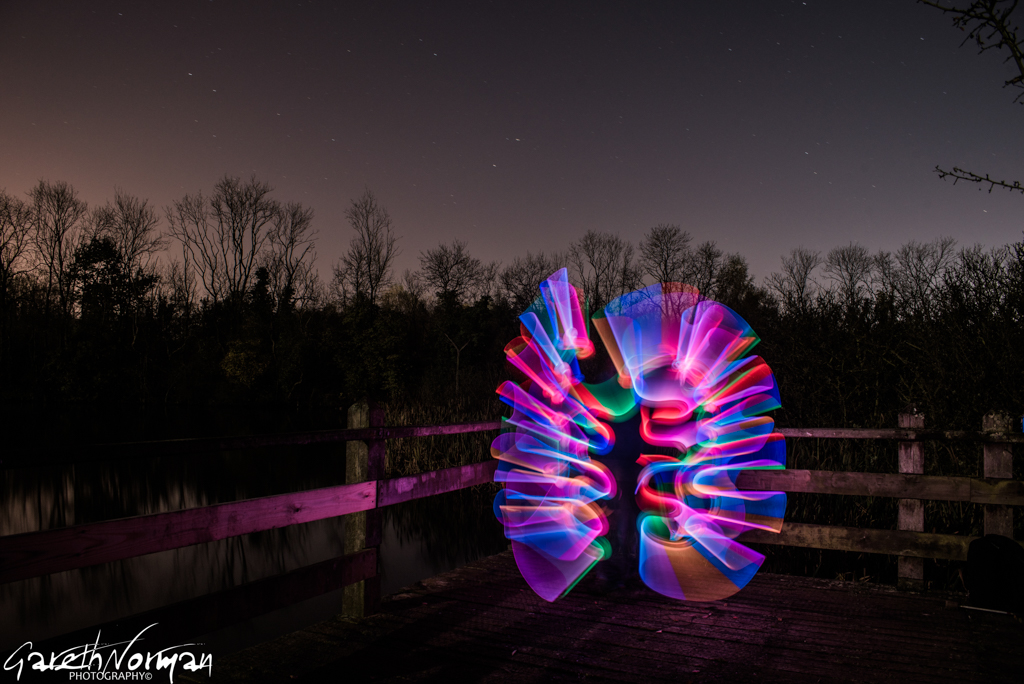 EXIF:f9, ISO100, 44 Seconds
EXIF:f9, ISO100, 44 Seconds
Also an experiment in moving backwards from the camera to produce a sort of well. Looked better from other angles, but still loved the way the light looks. Top Tip: Move Slower for more contrast, faster, for a dreamier look.
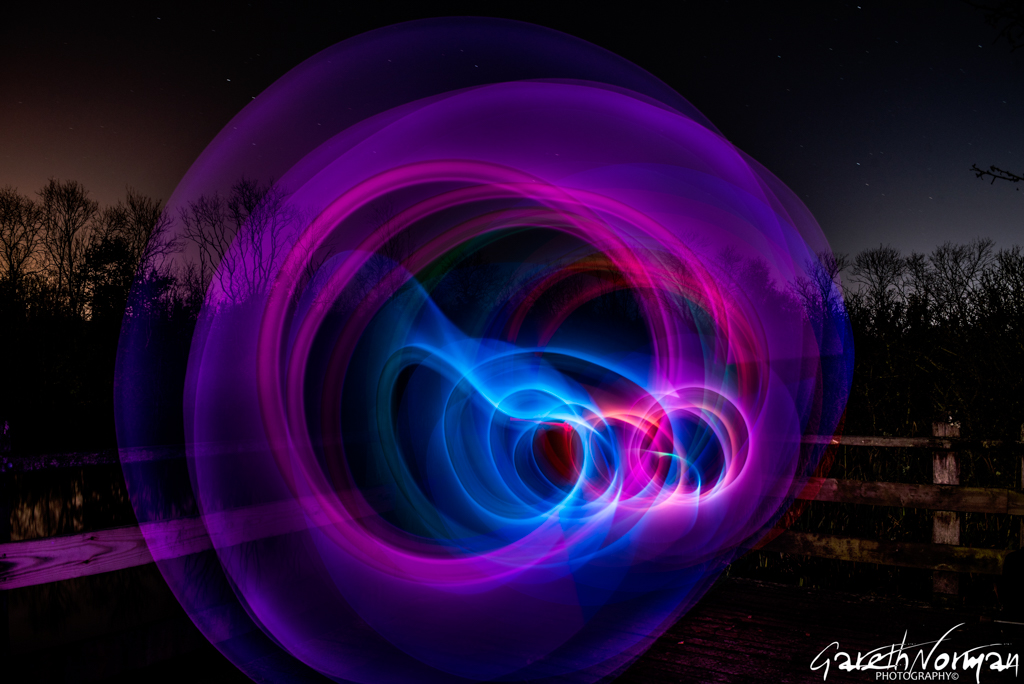 EXIF:f9, ISO100, 42 Seconds
EXIF:f9, ISO100, 42 Seconds
And now for the really fun stuff. Don’t do this at home!!!! Not unless your 100% confident and have everything in place if things do go wrong. Don’t say i didn’t warn you.
Spinning Wire Wool is quite an exhilarating experience. Don’t start shooting when the wool is lit, but just after the first revolution. Gives you a cleaner line and less blow outs.
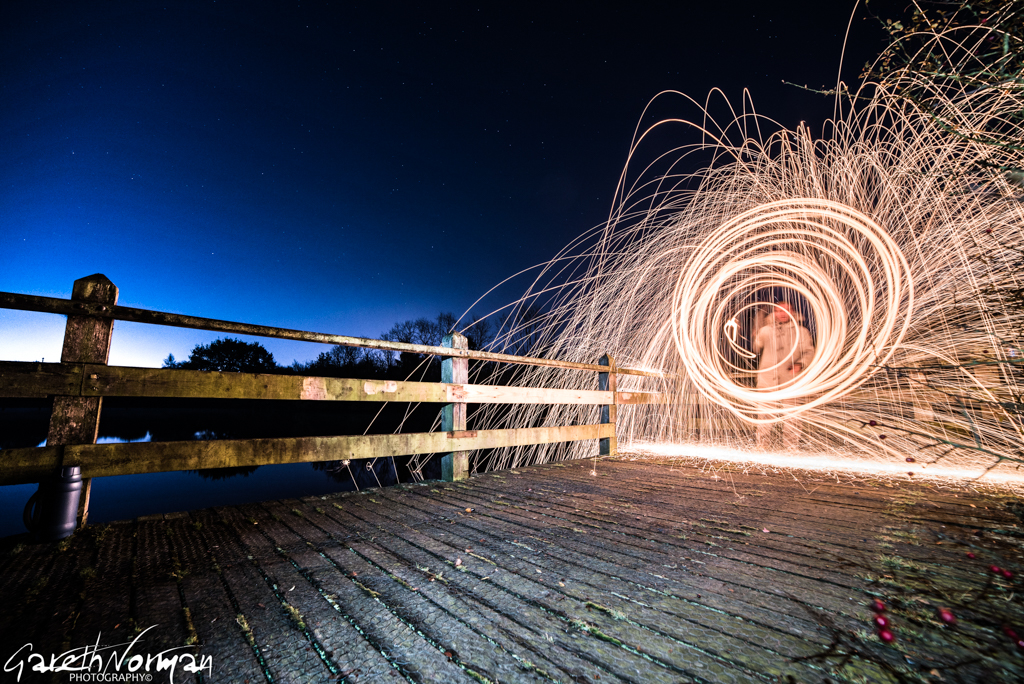 EXIF:f7.1, ISO100, 10 Seconds
EXIF:f7.1, ISO100, 10 Seconds
Spinning in different directions adds different effects. Being more vigorous does throw the sparks out more, and looks great at different angles.
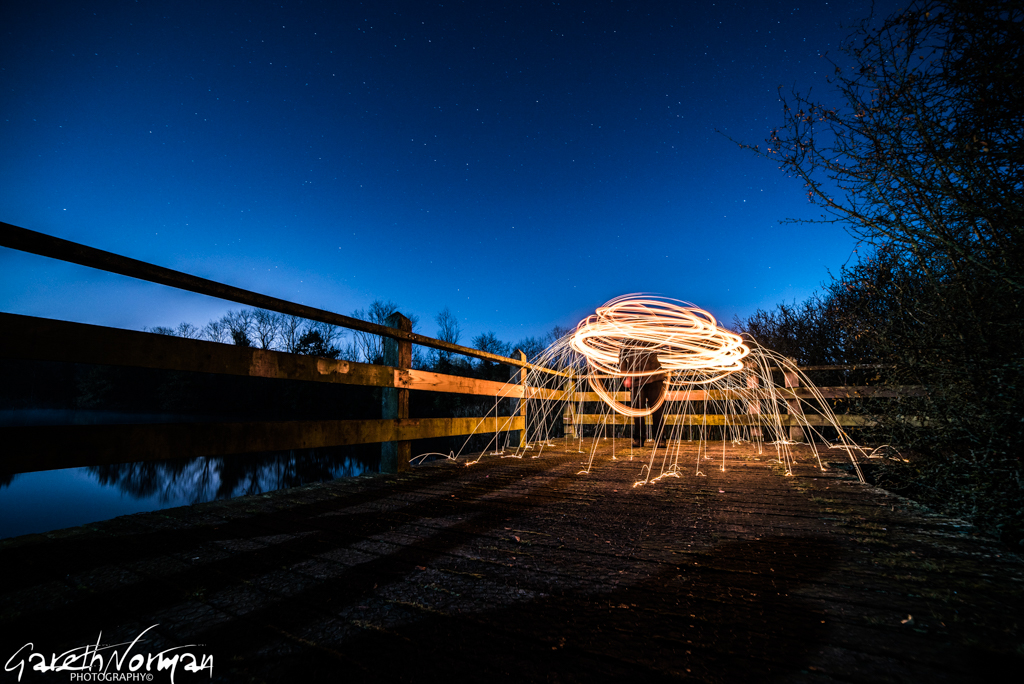 EXIF:f7.1, ISO100, 26 Seconds
EXIF:f7.1, ISO100, 26 Seconds
I think this is pretty optimum angle for the location we were at. not straight left to right and not directly above your head. Depending on the location this is great.
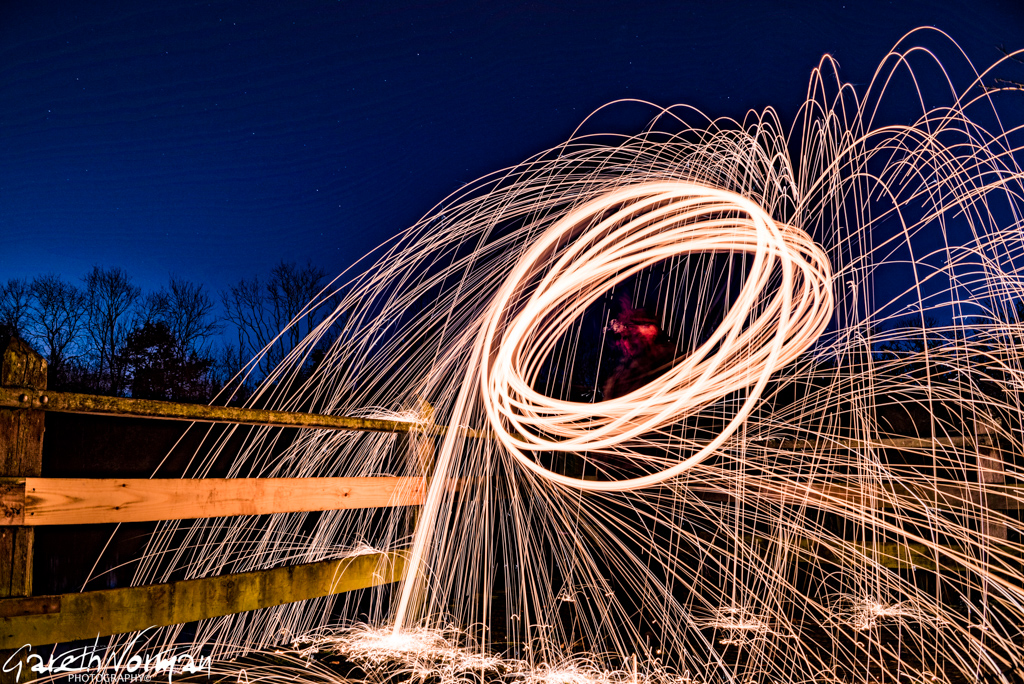 EXIF:f9, ISO100, 9.7 Seconds
EXIF:f9, ISO100, 9.7 Seconds
This is going full pelt. A lot of sparks flying and bouncing off every surface. The quicker the spin, the cleaner the lines.
 EXIF:f9, ISO100, 11 Seconds
EXIF:f9, ISO100, 11 Seconds
I hope you liked these shots.
It is beneficial to have a number of people with you doing this. Safety in numbers, but also to set off triggers so everyone gets the shot.
My kit for this was a full frame Nikon DSLR with a 28-70 f2.8 lens and a 14mm f2.8 wide angle lens. An intervelometer to keep the camera steady and a pretty sturdy tripod.
Any questions please comment and i’ll get back to when i can.
Have Fun, Stay Safe, and go get some great shots!.
you can see more of my work at
https://www.instagram.com/garethnormanlandscapes/
https://www.instagram.com/garethnormanportraits/
https://www.facebook.com/garethnormanlandscapes/
https://www.facebook.com/GarethNormanPhotography/
#lightpainting #wirewool #wirewoolspinning #steelwoolphotography #widelens #longexposure #sparks #neverstoplearning #neverstopexploring #nightphotography #nightshooting #lighttrails #leicesterphotographer #garethnormanphotography
